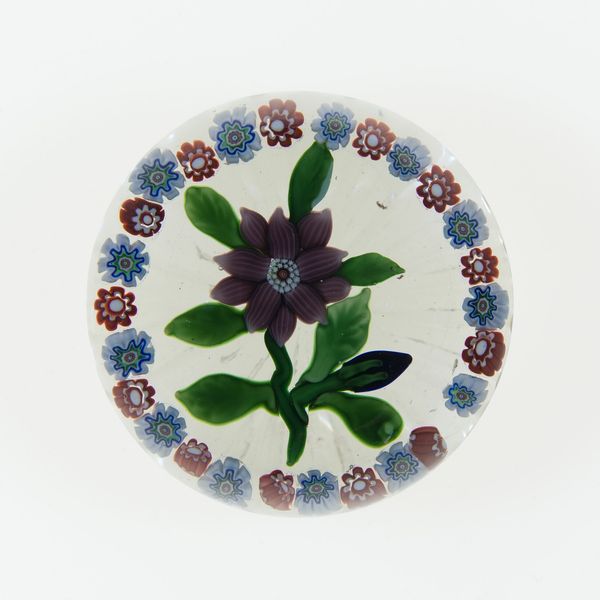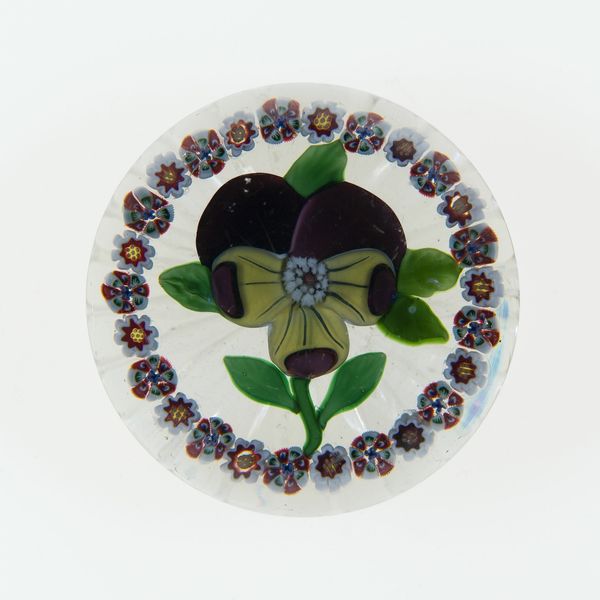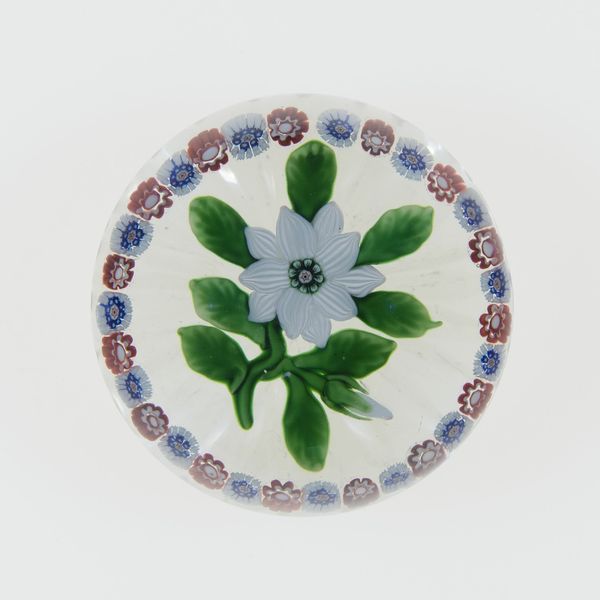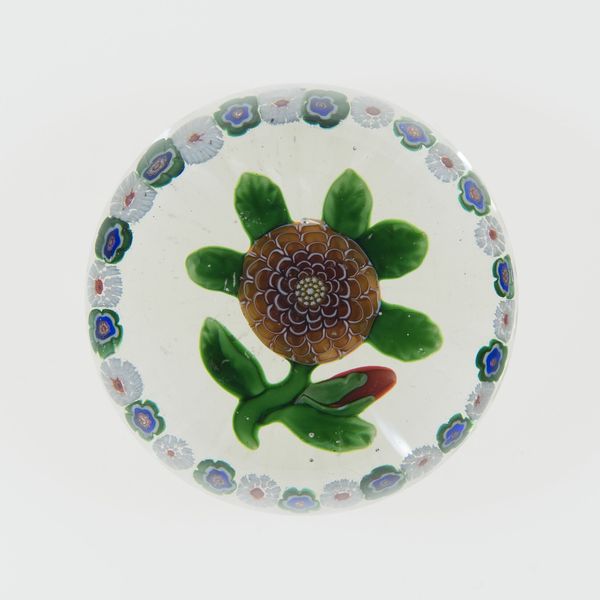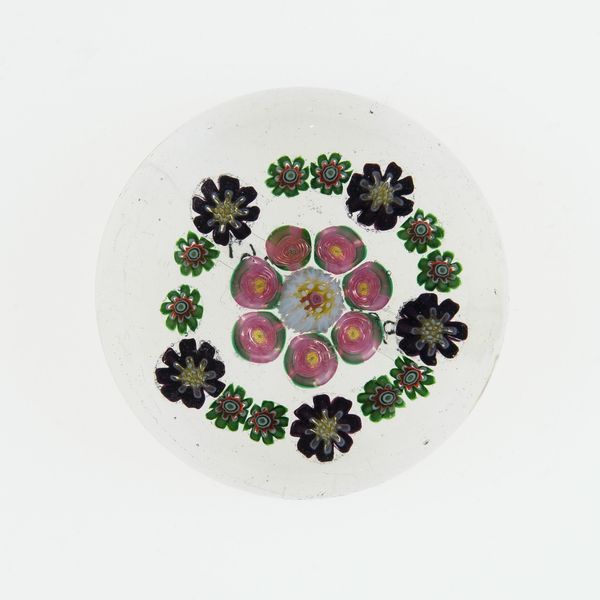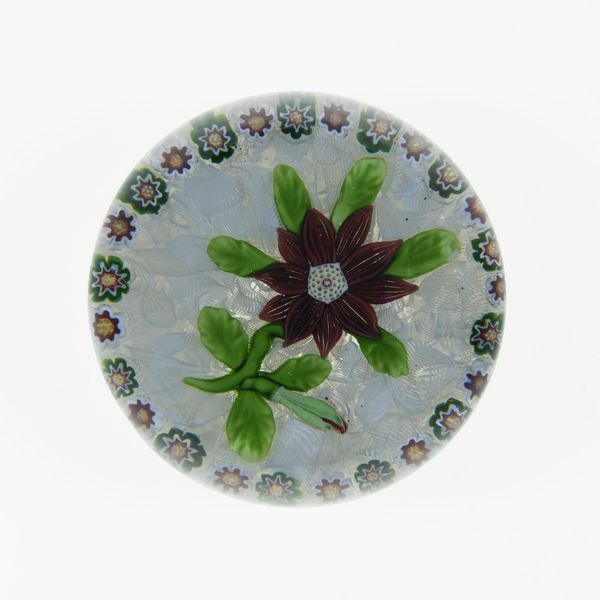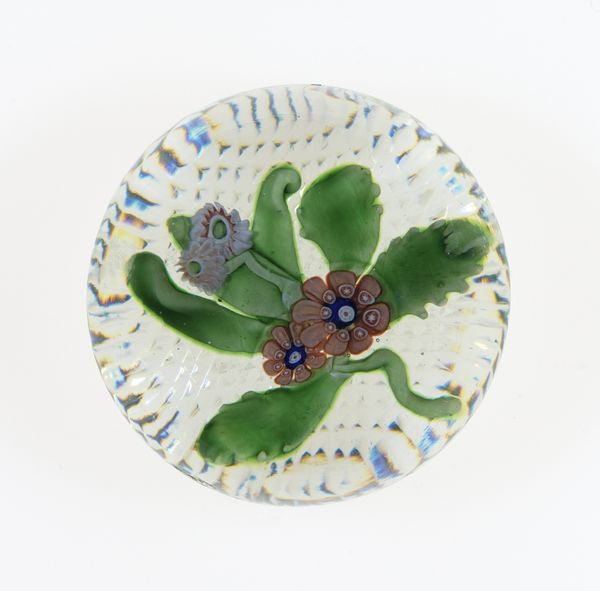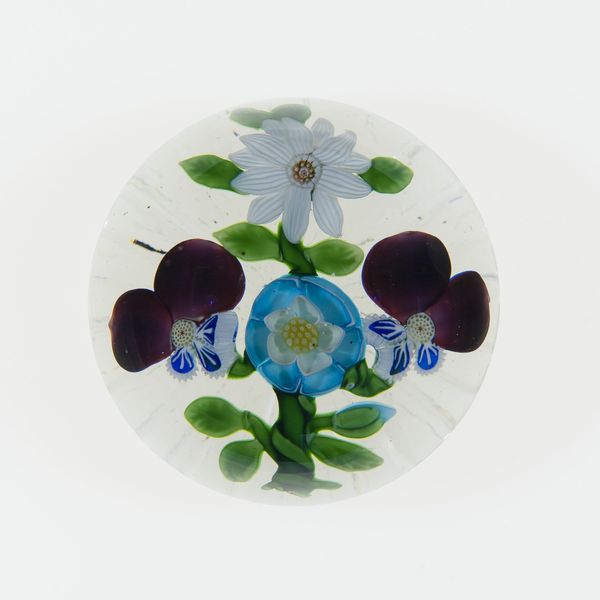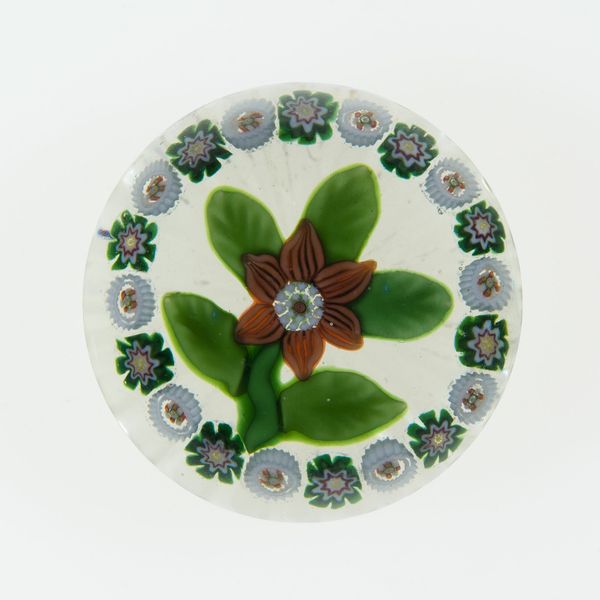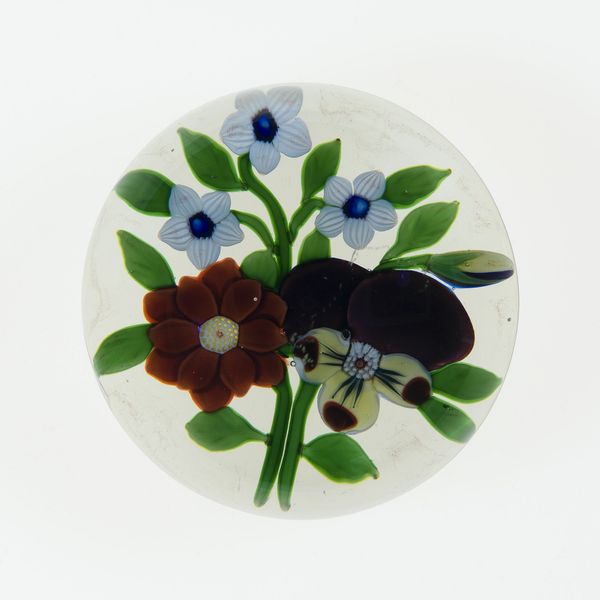
Dimensions: Diam. 7.6 cm (3 in.)
Copyright: Public Domain
Editor: So this is "Paperweight," made by Baccarat Glassworks around 1845 to 1860. It combines paper and glass, and it’s currently held at the Art Institute of Chicago. It’s incredibly delicate and intricate, a world captured inside glass. How do you approach something like this? Curator: Let's think about the materials first. Glassmaking at Baccarat wasn’t some lone artist’s pursuit; it was factory work. These paperweights demonstrate highly specialized labor and control over the industrial production of glass. Think about the precise furnace temperatures, the social hierarchy within the glassworks… it all culminates in this object meant for personal, domestic use. Editor: That makes me reconsider its daintiness. Were these widely available or just for the wealthy? Curator: Good question! Paperweights like this would have been luxury goods. Glassblowing demanded skilled labor, specialized equipment, and costly resources. These floral motifs weren’t just decorative, but expressions of wealth and status. They are beautiful but speak to the resources available during that era. Consider also that "paper" is one of the materials referenced, an innovation gaining popularity at that time. The very notion of the artwork being "still life" suddenly moves into an interesting place, wouldn't you agree? Editor: Absolutely, the convergence of factory production and artistic intention… it gives "still life" a whole new context. Thank you! Curator: Indeed. Examining the production reveals layers of social and economic meaning embedded within this seemingly simple object. Always consider the hands, labor, and materials that create the things we appreciate.
Comments
No comments
Be the first to comment and join the conversation on the ultimate creative platform.
